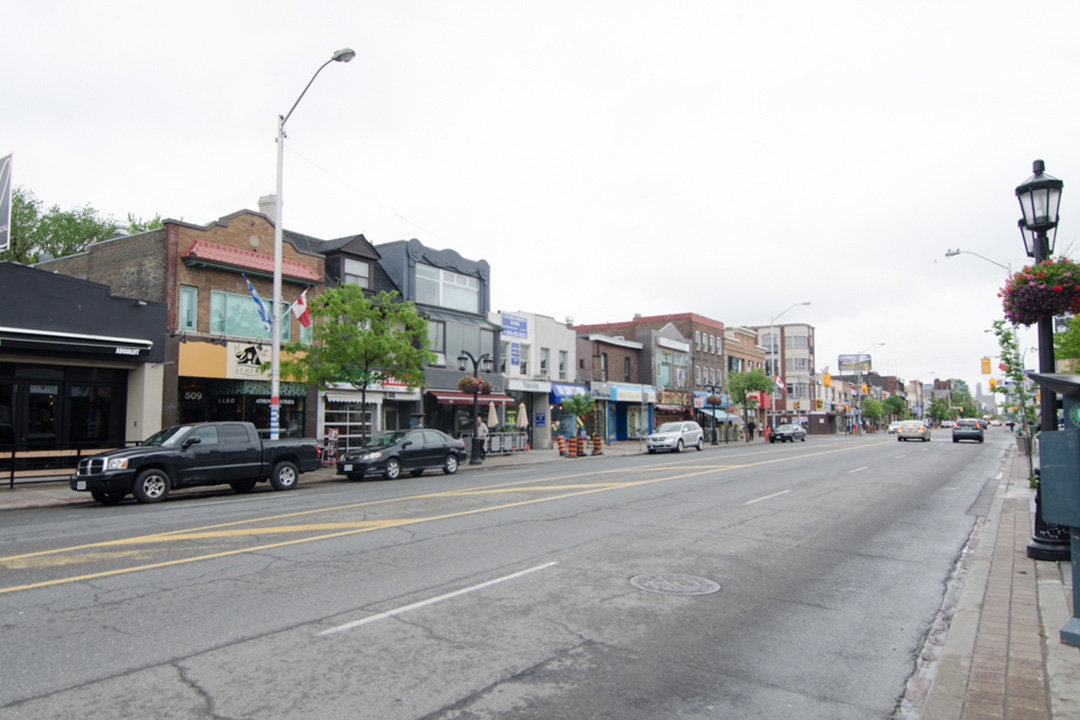Cities are not seamless, discrete entities; they are made of separate, interacting neighbourhoods. So how do neighbourhoods form over time? That is the question explored by a trio of researchers from the University of Toronto and Columbia University. The researchers, led by UTSC sociology professor Daniel Silver, tried to uncover the mechanics of how neighborhoods evolve with a computer model.
By paying attention to urban spaces — public spaces like parks and malls — where citizens interact with each other, the researchers discovered how distinct groups of people can come to live in areas with members of their same social group, a process sociologists call residential segregation.
Residential segregation can occur on the basis of any number of identifying characteristics, including race, nationality, and socioeconomic status. It has a lasting impact on social equity, as neighbourhood resources can often influence health and social mobility.
The mathematics of diversity
The researchers built their simulation using a model proposed in the 1970s by economist and Nobel Laureate Thomas Schelling. The Schelling model is used to study the segregation of diverse communities in certain neighbourhoods.
In an email interview with The Varsity, co-author and research associate at the Rotman School of Management Patrick Adler shared a simple example of how the Schelling model works. The parable of the polygons, an interactive web app developed by Vi Hart and Nicky Case, illustrates how bias and prejudice play a role in people we choose to surround ourselves with.
The app focuses on two shapes: triangles and squares. Each shape wants to “move if less than 1/3 of [their] neighbours are like [them].” This bias leads to spatial segregation based on differences. When the simulation is run, these individual preferences cause shapes to recognize themselves, and over time, they form distinct clusters of triangles and squares — neighbourhoods of similar shapes.
The simulation also explains the instability of equality by showing how a small bias can have a great impact on the composition of an entire urban setting. It also explains how removing the bias won’t remove segregation in a society where the bias has once existed — there needs to be active change in place that helps to shift the overall perception of citizens.
Venues and residential segregation
According to the researchers, common causes of residential segregation include employment, housing discrimination, and the physical layout of the society. The researchers’ particular interests were in the impacts that the abundance and placement of specific venues have on the segregation present in society.
The researchers ran three studies. In the first two, they classified venues as “historical artifacts that belong to one group or another.” They found that when a society was more open minded, or had higher levels of tolerance, the addition of public venues caused more integration. However, when a society had a lower tolerance, the addition of venues caused more segregation.
“Essentially, the parishioner is happier to live in a mixed neighborhood when they are close to a church, and the young single doesn’t mind having older neighbors as long as there are bars full of other young people close by,” the researchers wrote.
In their third study, the researchers added another layer to their experiment and considered what would happen if they placed restrictions on the inclusivity of certain venues. The segregation that resulted was not proportional to the restrictions on venues, and while some segregation did occur, residential diversity was also created.
Silver wrote to The Varsity that he “was surprised to find that more exclusive venues can be the basis for more diverse neighbourhoods, while more inclusive venues can spark greater segregation.” Overall, however, he is satisfied with the results.
“We expected to find that venues can help us to understand the basis of distinctively urban forms of social order, and that turned out to be the case,” he wrote.
How can this model be applied to Toronto?
When asked about applying this particular model to Toronto, Adler explained that there are examples of his and the teamʼs research in the city. He referenced work done by geographers Jason Hackworth and Josephine Rekers examining the neighbourhoods of Greektown and Little India, arguing that communities there have been influenced by ‘bootstrapping,’ which Adler described as a “tendency for residents to accept more diversity than they would otherwise because they still have access to in-group life.”
Evidently, the society that we are currently living in does not resemble one in which public spaces are even open for interactions. Adler pointed out that this makes their model difficult to apply to a pandemic setting, as “it assumes physical interaction at venues.”
He added that he and his colleagues might work on extending their model for the future by incorporating a new relationship between people and venues, but exactly what that relationship will be is currently unknown.
“If there is a weaker attachment, then you would probably expect fewer venue effects, but I don’t think we know enough to say that there would be a weaker attachment,” he wrote. “If people are spending the pandemic realizing how important venues are, then we would see the opposite effects.”


